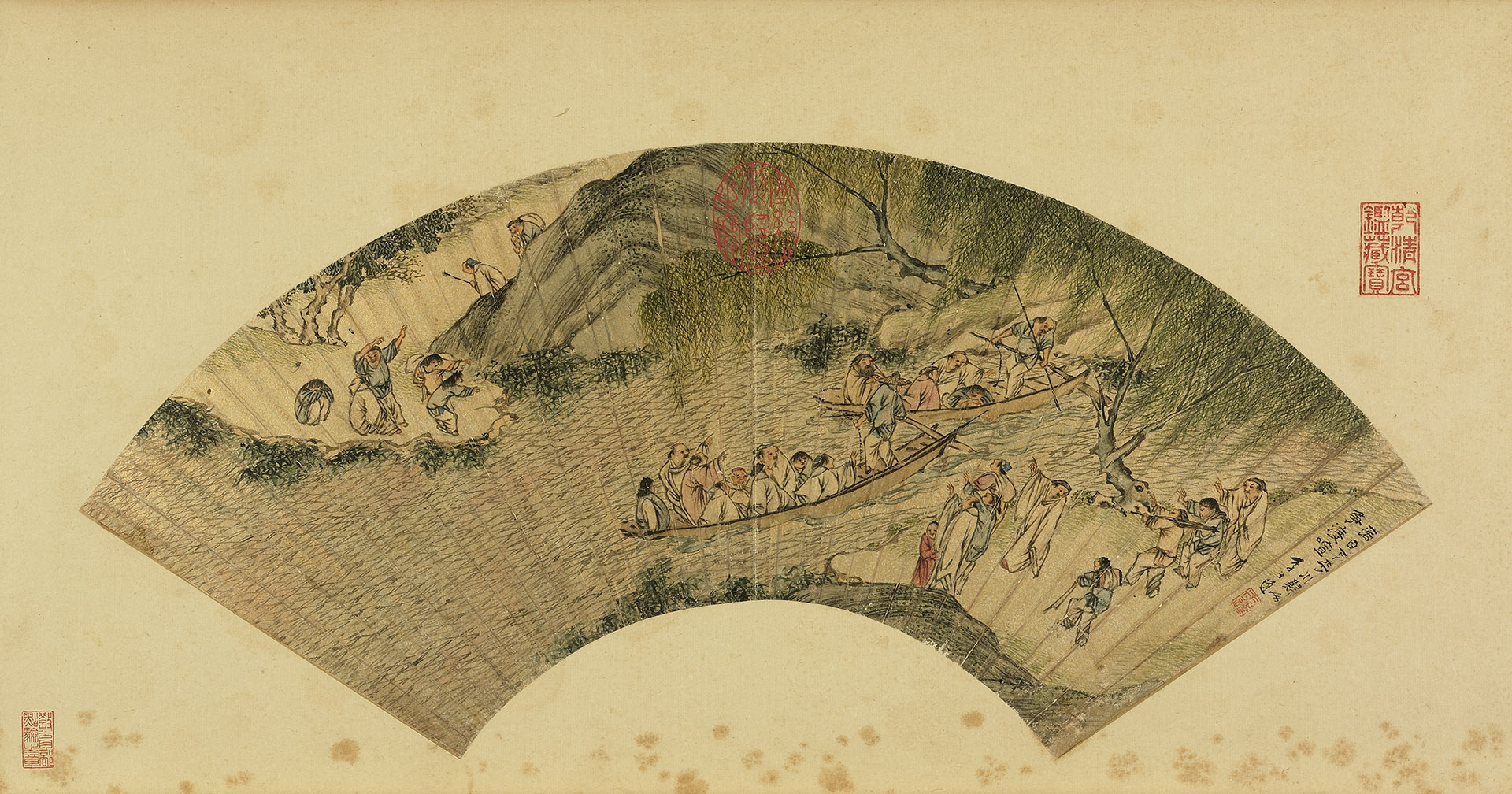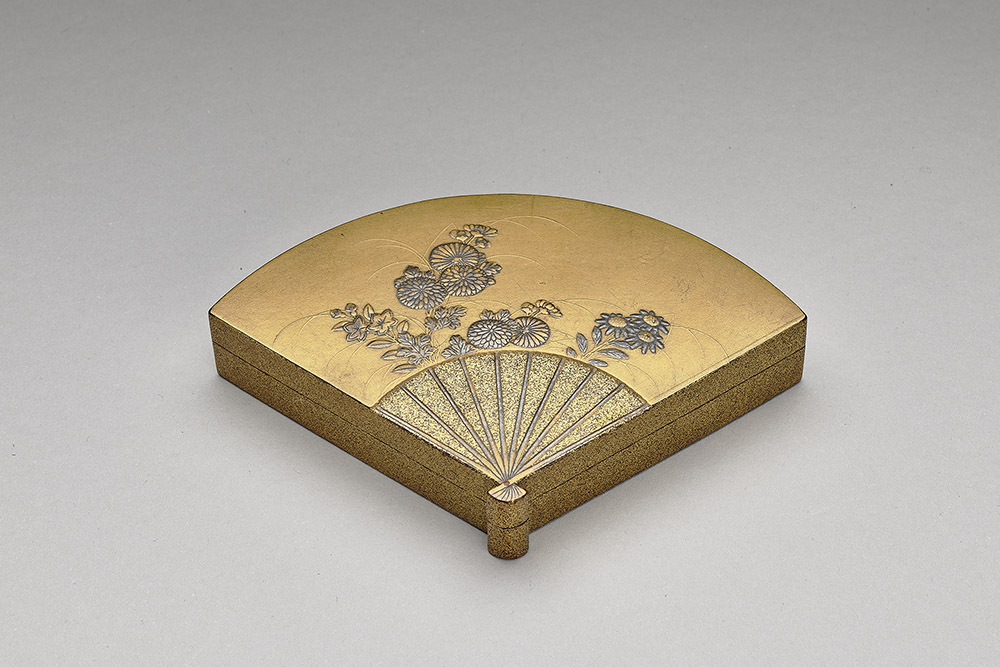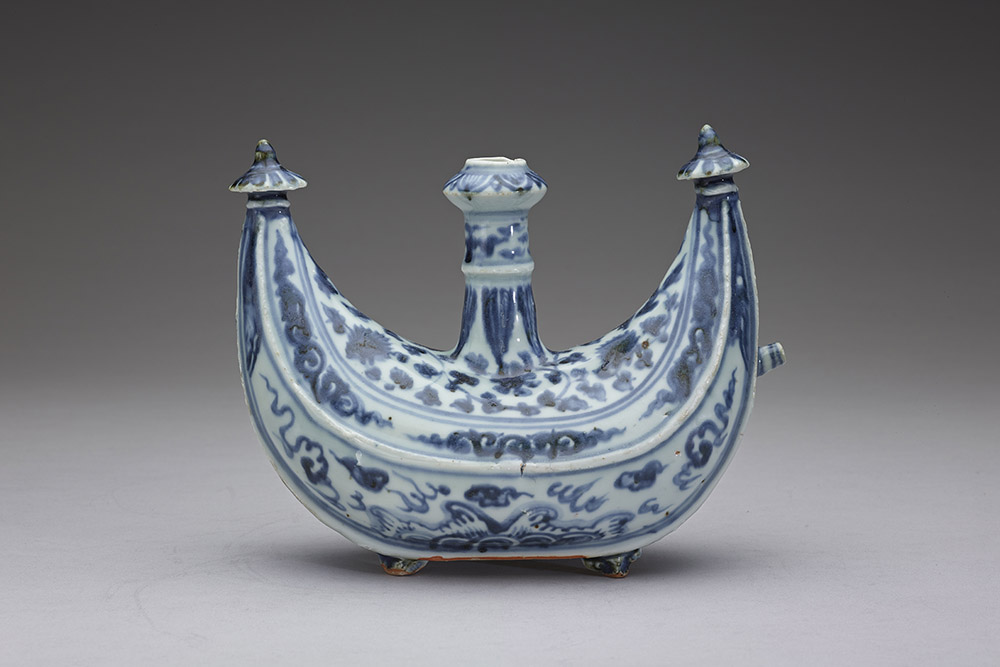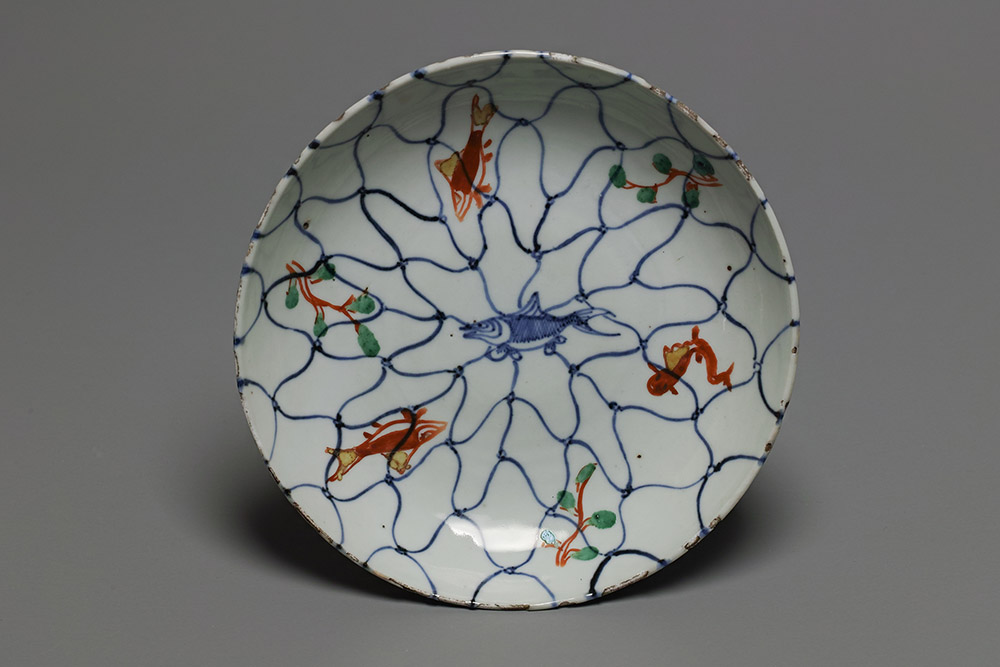Emerging Intercultural Expression
The Age of Discovery ushered in the age of exploration. Ardently or otherwise, countries joined in. From Taiwan, Japan and China in East Asia; from the Islamic world in West Asia; from Portugal, Spain and the Netherlands in Western Europe, exchanges of art and culture advanced considerably. Through diplomacy or war; through trade or prey; through movements temporary or permanent, such exchanges emerged as people converged, gradually morphing into a time unchained from the past; a time in which globalization was embraced.
Pendulating between the native and the foreign; weighing between business interests and self-actualization, artists and artisans reinvented foreign inspirations they seemingly understood. Through imitating, learning and interpreting; through perceptions and misperceptions, new knowledge encompassing both East and West was born; a diverse array of magnificent art was created. In forms tangible or intangible, the exchanges of art and culture reiterated, witnessing the intercultural expression emerging from human civilizations at this time.
- Returning of Boat | 1368-1644
- Li Shida, Ming Dynasty
- Fan Painting
- Image Height 17.5cm, Width 52cm
- National Palace Museum Gu Hua 003556
The folding fan is an important cultural symbol in East Asia. When they were first introduced to China from Japan through Goryeo Korea (modern North Korea) in the 10th and 11th centuries, they were rare goods owned by a small number of envoys and scholar-officials. In the 15th and 16th centuries, folding fans were imported to China in large numbers due to the expansion of the China-Japan trade. This prompted local imitations of folding fans and inspired Chinese artists to adapt this new medium for the creation of art. Fan paintings became popular in China and bore witness to interactions among the East Asian cultures.
Since the mid-16th century, Chinese painters of various backgrounds devoted themselves to the creation of fan paintings. As the featured fan paintings show, the curved fan shape and the portable nature of the folding fan affected artists’ approaches towards spatial composition and how paintings were viewed. It became a new means for expressing one’s identity, aspiration and sense of aesthetics, and became an item pursued by people of all social classes.
Li Shida’s (fl. 16th -17th centuries) Returning of Boat also replicates the trio of poetry, calligraphy and painting. However, his poem is intentionally colloquial and the focal point centers on the commotion over a spot on the ferry. The shift in expression is a sign of the wide popularity of folding fans, and of professional painters’ choice of daily subjects to the general consumer.
- Lacquer Box with Chr ysanthemum Décor | 17th-18th Centuries Japan
- Length 6.2cm, Width 9.5cm, Height 1.8cm
- National Palace Museum Gu Qi 000443
Of the two fan-shaped lacquer boxes on display, one has a lid with realistic details of a folding fan. In addition to the clearly identifiable ribs, the surface is pleated and decorated with landscape and pavilions. The box contains two layers, each with a small piece of jade. On the second box, the fan-shaped lid is decorated with the rib structure that spreads into a flat surface adorned with the chrysanthemum and balloon flower motifs. The decoration was created using the taka maki-e (Japanese raised lacquering) technique, which results in a slightly raised effect. A piece of jade is also stored inside this box. Both boxes are containers of individual items inside the curio boxes created for the Qing imperial palace. The use of imported lacquer boxes for storing antiquarian collections reflects a sophisticated taste that echoes a curated attention to storage and appreciation, which was popularized by Treatise on Superfluous Things by Wen Zhengheng.
Next, the fan-shaped form is examined. Most of the similar pieces date back to the late 17th and mid-18th centuries. However, the large-scale export of maki-e lacquer ware from Japan to Europe and other parts of Asia after the end of the 16th century should be taken into account when rationalizing the context behind these two fan-shaped boxes. In other words, the introduction of maki-e lacquer ware from Japan to China could predate the late 17th and mid-18th centuries. As scholars pointed out, to explore when and how these two boxes were collected by the Qing court, one could reference to the objects presented to Emperor Kangxi in 1693 by Li Xu (1655-1729), who headed the Suzhou Weaving Bureau, and to the itemized list documented in the palace memorial, especially when the name, Li Xu, written in ink, appeared on the paper slips pasted under some maki-e lacquer ware from the Palace of Versailles and Guimet National Museum of Asian Arts in France. Among these pieces are fan-shaped boxes resembling the two from the National Palace Museum. A likely period of production and the context behind their origin could thus be established.
Furthermore, the cultural exchange that inspired the fan-shape design is explored. Academic research has all but confirmed that folding fans were introduced from Japan to China through Goryeo on the Korean Peninsula as early as the 10th to 11th century, and such spread was without interruption. In the 16th century, the literati in Suzhou expressed their longing for seclusion by painting scholars in the company of woods and springs on their fans. As the means of cultural exchange grew expansive and diverse, and with the introduction of Minggong Shanpu (The Fan Album by Celebrated Masters) from China to Japan no later than 1621, another wave of trends emerged. Consequently, fan paintings and fan-shaped objects gradually became fashionable motifs and designs.
- Crescent-shaped Kendi in Underglaze Blue | 16th Century
- Length 20.5cm, Width 10cm, Height 15cm
- National Palace Museum Nan Gou Ci 000105
This water vessel is shaped like the crescent of the new moon, which symbolizes new beginnings in the doctrine of Islam. During the Age of Discovery in the 16th century, a period marked by the establishment of new maritime routes, intercultural exchanges also introduced fresh elements to the objects in circulation. The decorative motifs identified on this vessel share similarities with those on the objects recovered from the Lena Shoal shipwreck. The similarities could serve as a reference for dating this vessel to between the late 15th and early 16th centuries. Additionally, observation of the 17th century metalware from the Metropolitan Museum of Art indicates that metalware is a likely inspiration for the crescent form of this vessel. Aside from objects in this form, the crescent moon was also used as a motif that paired with flowers, foliage and trees to create a moonlit scene, as depicted on the displayed pieces, be it the unmarked mid-15th century porcelains or the 16th century Jingdezhen ware marked with “Da Ming Jiajing Nian Zhi (Made in the Jiajing reign of the Ming dynasty).” The crescent moon motif is also identified on the specimens excavated from the ruins of Fustat, Egypt, which had been an interchange between China and West Asia since the 15th and 16th centuries. It appears that decorative patterns bespoke for the Islamic market had materialized from the porcelains that converged here.
- Dish with Fish,Waterweed and Fishnet Motifs in Underglaze Blue and Overglaze Enamels | 1621-1627 Tianqi reign, Ming dynasty
- Jingdezhen Ware, Tenkei-akae
- Height 3.7cm, Diameter 16.4cm
- The Museum of Oriental Ceramics, Osaka 02334 Donation by Mr. HORIO Mikio
Among the kosometsuke (old blue and white), which were mainly produced during the Tianqi reign in the Ming dynasty, those decorated with wucai (polychrome) enamels were called “Nankin akae” or “Tenkei akae” in Japan and enjoyed wide popularity. Scholars had long been perplexed about the exact kiln site in Jingdezhen where kosometsuke was produced until recent years. When specimens similar to the extant pieces collected in Japan were discovered at multiple locations in Jingdezhen, the production details of kosometsuke were finally revealed.
This dish is covered entirely with the fishnet motif in underglaze blue. A fish in the same cobalt underglaze adorns the center with three more in the surrounding decorated predominately in red glaze. Juxtaposed among the fish are three pieces of waterweeds in red and green glazes. The opposing stance between the “net” and the “fish” was cleverly captured by the artisan, leaving viewers wondering whether these fish are caught inside or have escaped out of the net. The bottom surface is also decorated with the fishnet motif. The ring foot is flat, caving inward and leaving the surrounding circle of biscuit exposed.
The decorative motifs on kosometsuke and Tenkei akae became the template for the 17th century Arita ware, the earliest porcelains produced in Japan, while leaving strong influence over the porcelains to come. The fishnet motif is still prevalent on tableware to this day as a part of daily life in Japan, indicating the popularity of kosometsuke and its integration into the Japanese culture.







